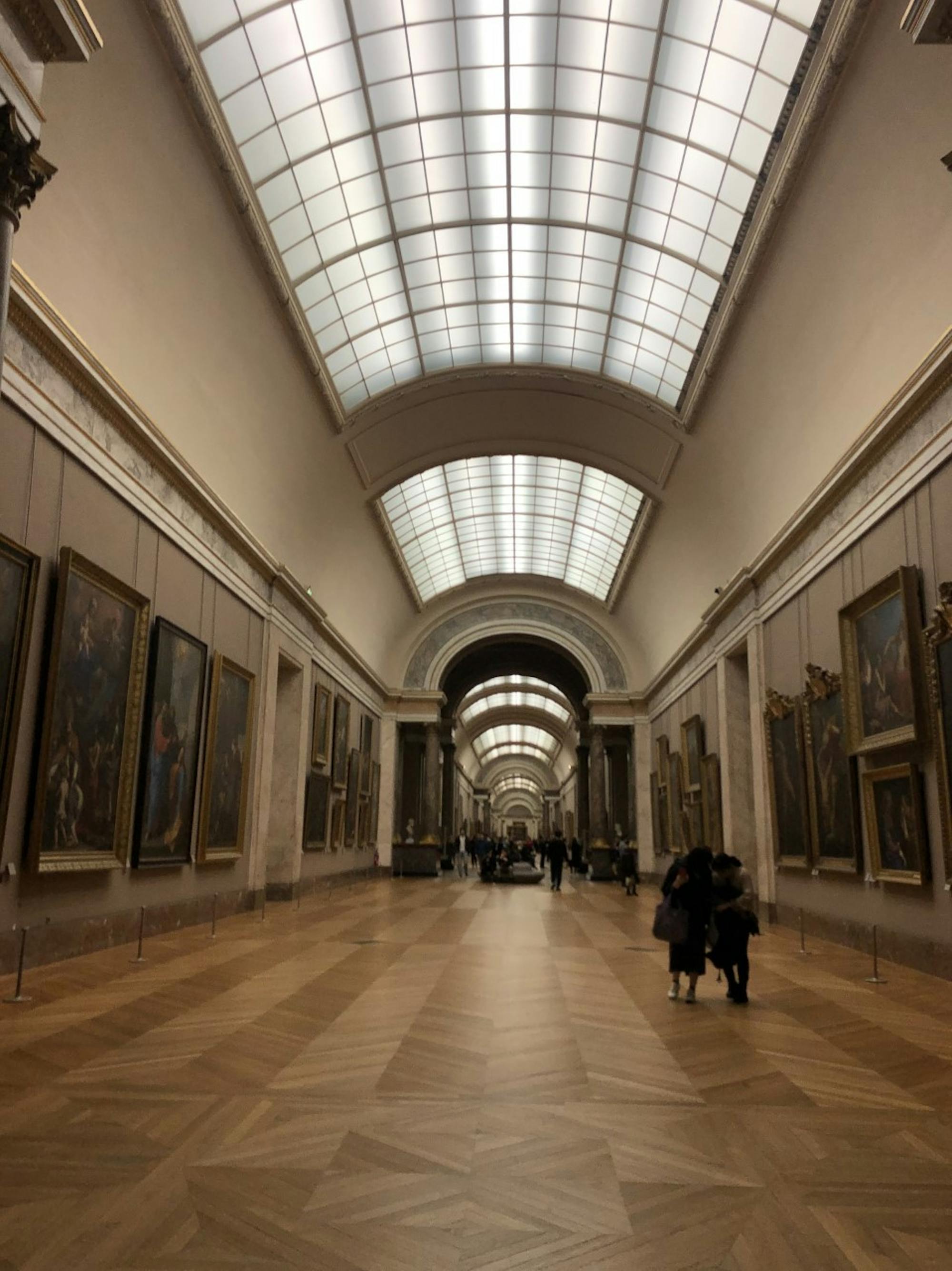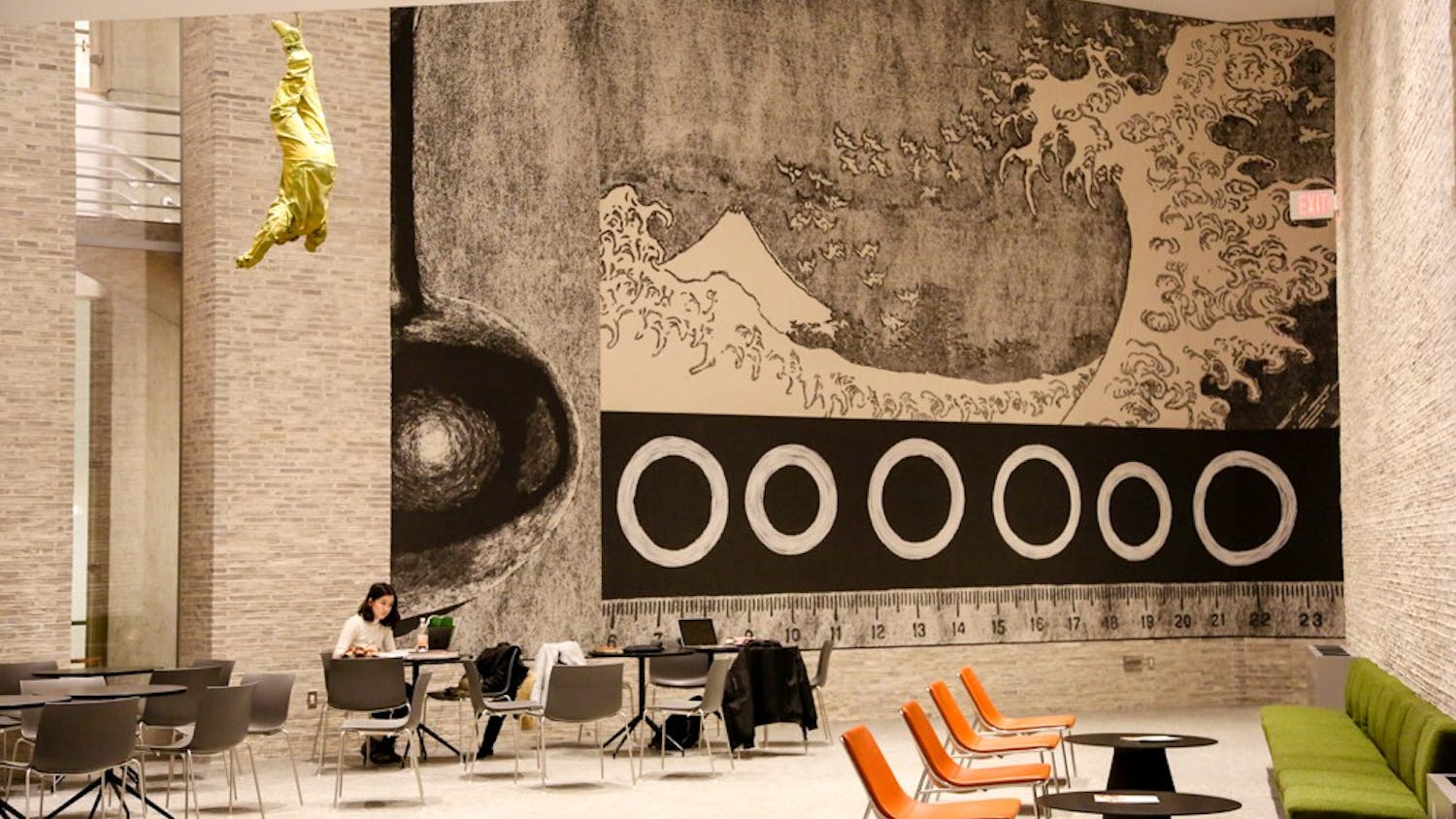PARIS — Paris is the bohemian, romantic, pulsing heart of arts, architecture and culture. The 20 arrondissements of Paris offer the recognizable monuments of the Eiffel Tower, Arc de Triomphe, Panthéon, Sainte Chapelle and the tragically damaged Notre Dame. Paris is a city of museums, with the Louvre, Musée d’Orsay, Musée Rodin, Centres Pompidou, Fondation Louis Vuitton and Fondation Cartier, just to name a few. One could spend weeks in the artistic palaces of the Louvre, which is the largest and most-visited museum in the world since the end of the 18th century. Perhaps the most anticipated exhibition of the year, the Leonardo da Vinci collection at the Louvre Museum, honors the quincentennial of the death of the illustrious artist in France in 1519.
Feb. 24 marks the last day of the da Vinci exhibit, which opened on Oct. 24, 2019. The exhibit attracted hundreds of thousands of visitors to the glass pyramid of the Louvre, with 150,000 tickets sold before the exhibit even opened. The last three nights of the exhibit were free, encouraging even more visitors. Curators spent 10 years creating an unprecedented collection of da Vinci works, in terms of size and breadth. This collection includes over 160 pieces of art, including drawings, paintings and sculptures. The pieces are borrowed from a variety of museums, such as the Vatican and the British Museum in London. Spotlighted in this exhibit are the 22 drawings and five da Vinci chef d’oœuvres that belong to the Louvre: the “Mona Lisa,” “Virgin of the Rocks,” “La Belle Ferronnière (Portrait of an Unknown Woman),” “Saint John the Baptist” and “The Virgin and Child with Saint Anne and Saint John the Baptist.”
The flow of the da Vinci exhibit aims to guide the viewer through the stages of the Italian artist’s life as a youth in Florence, a sculptor in the workshop of Andrea del Verrocchio, his studies of line and movement, the artistic and mathematical drawings of hydraulic engines and the world-renowned Mona Lisa — seen through an HTC Vive virtual reality experience to uncover the intricacies of the painting. This is the first time the Louvre has mingled virtual reality with its art collection. The virtual reality tour offers a new facet in which to regard the 30-inches tall by 21-inches wide portrait — which is the world’s most famous and visited painting. In addition, to facilitate crowd control and allow maximum access to all tourists, the painting itself remains open to the public in its original room. The exhibition includes a rich collection of 150 of da Vinci’s drawings, scientific manuscripts, sculptures and 11 of the 20 paintings that he completed in his lifetime.
Traditionally, da Vinci’s life is divided into six parts, based on his travels and the areas where he worked. However, during the 10 years of compilation and composition, Louvre staff established an exhibit structure based on the artist’s creative evolution. The new Louvre structure is instead split into four parts: Light, Shade, Relief; Freedom; Science; and Life. The first of these, Light, Shade, Relief, focuses on the early days of da Vinci’s career. It includes his recorded piece, “Study of a Tuscan Landscape,” as well as a number of sketches from his apprenticeship with the sculptor Andrea del Verrocchio. Freedom expands into his explorative period, wherein he began establishing his distinctive style and painted a number of his most famous pieces including the original painting of “The Virgin of the Rocks” as well as an infrared reflectogram investigating the numerous layers and original plans for the painting. In order to master an understanding of the exterior of the human body, da Vinci sought to learn about its inner workings as well. The anatomical studies from his Science period include the renowned “Vitruvian Man” study, which, after a court battle to allow the fragile piece to leave Italy, was on display. The final era of the exhibition includes the virtual reality study of the “Mona Lisa” as well as a number of other paintings that demonstrate the culmination of his years of practice and scientific study.
For students of Dartmouth’s Language Immersion FSP in Paris, art and the Louvre specifically has played a significant role in their experience. The program provides students with a pass to the museum for the duration of the ten weeks and includes a course in Art History that asks students to explore the museum and discuss a number of pieces. Additionally, Clos Lucé — the house where da Vinci lived and worked during the last years of his life — served as a final stop for a few art history-centered day trips. Like the exhibit, the home and grounds display a number of sketches and paintings in the setting where he likely created them. It also incorporates designs and models of his numerous inventions, including the wing mechanism for his proposed helicopter and the outer structure of his ‘tank,’ to be tested and enjoyed by visitors of all ages.
Such excursions contribute to the cultural and historical education of the study abroad program. While the overarching purpose of the FSP is to improve students’ grasps of and familiarity with the language, it also incorporates a comprehensive study of French history, dating back from current events to the Middle Ages. Furthermore, a large part of the education received is in the hands of the students; living in Paris places the Louvre, le Marais, Saint-Denis and other cultural and artistic hubs at their fingertips.
An attendee of the much-anticipated and attended exhibit named Alexandre said he appreciated the new structure through which the Louvre presented da Vinci’s works.
“I was quite surprised about everything this man did in his life,” Alexandre said. “I was only thinking of his paintings and some science, but I didn’t know he was thinking about mathematics, nature and so much more until I saw the drawings in this exhibit.”
He also remarked on the content of the exhibition; it was, he said, heavily focused on the artist’s sketches and drawings, with less attention on the paintings.
Iuke, another attendee, loved the pieces and the composition of the exhibition, but found it difficult to appreciate with such large crowds inside.
“It’s very beautiful — he was so passionate,” she said. “But you’re surrounded by many people, so it was very hard to see.”
While the exhibit includes more than two-thirds of da Vinci’s 15 paintings, it lacks the magnificent “Salvator Mundi.” This stunning painting depicts Jesus, in Renaissance garments, making the sign of the cross with his right hand and holding a clear, crystal orb in his left hand, which represents the world and his role as Salvator Mundi, or the savior of the world. “Salvator Mundi” is the most expensive painting sold at public auction in history, sold at a Christie’s auction in 2017 for the price of $450 million. The painting is in the hands of Mohammad bin Salman, the Crown Prince of Saudi Arabia. The current location of the painting is unknown, but believed to be on one of the Crown Prince’s super yachts, sailing on the Red Sea. While curators were hopeful that the chef d’oœuvre would be present at the da Vinci exhibit, going so far as to advertise its anticipated presence, it has failed to appear. The tragic absence of Salvator Mundi is tangible, like the empty frames of Vermeers and Rembrandts that hang in the Isabella Stewart Gardner Museum in Boston following the greatest art heist in history.
Offering an unprecedented glimpse into the life of da Vinci, the Louvre gathers together a rich collection of his works as an artist and creator. This exhibit is special in the manner it presents da Vinci as a true polymath. His talent is not bound to the Mona Lisa, it extends to engineering, anatomy, cartography and mathematics, among others. Despite the immense crowds (or even more immense than usual), it is truly extraordinary to study the ingenuity of da Vinci.




